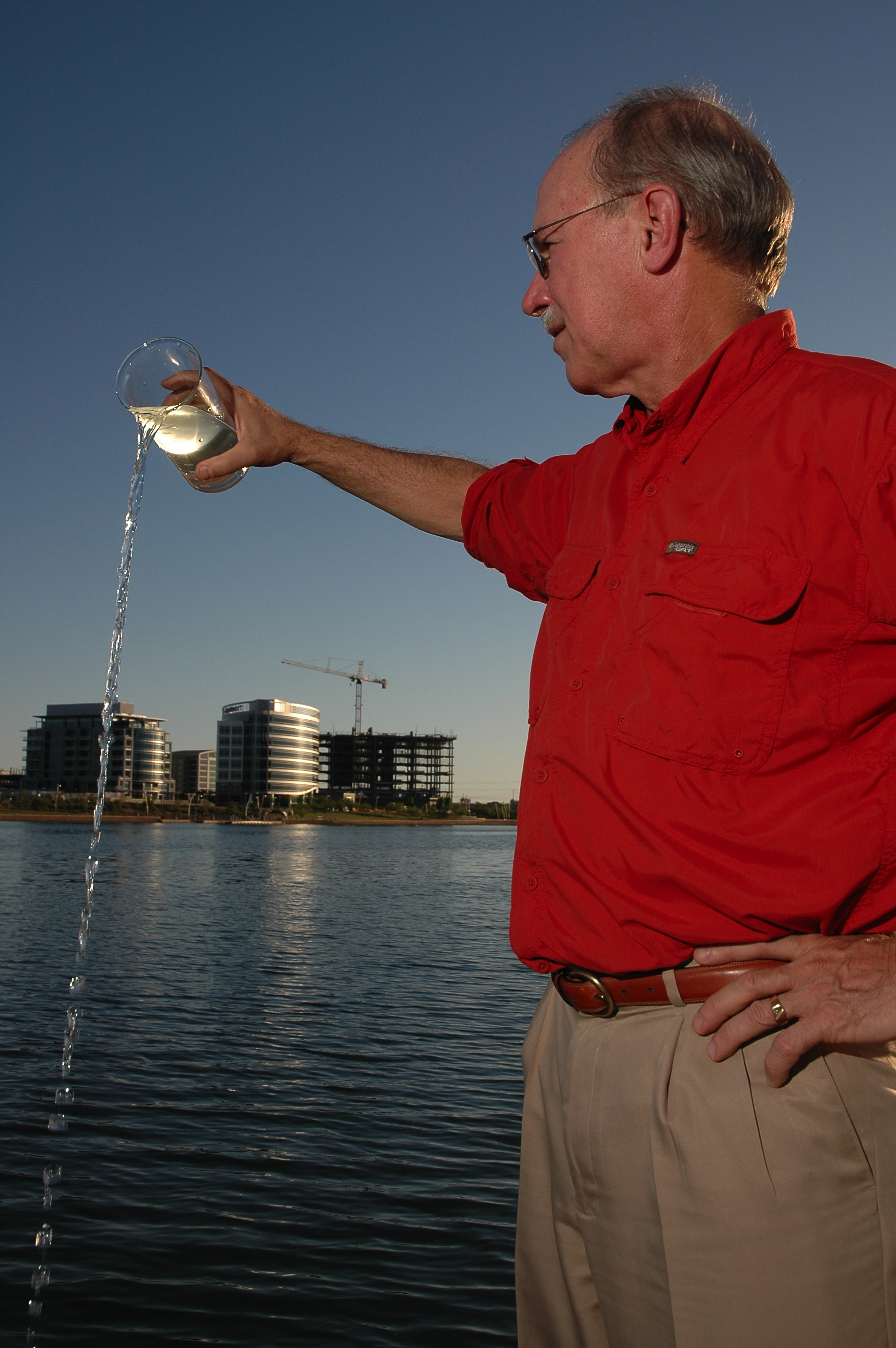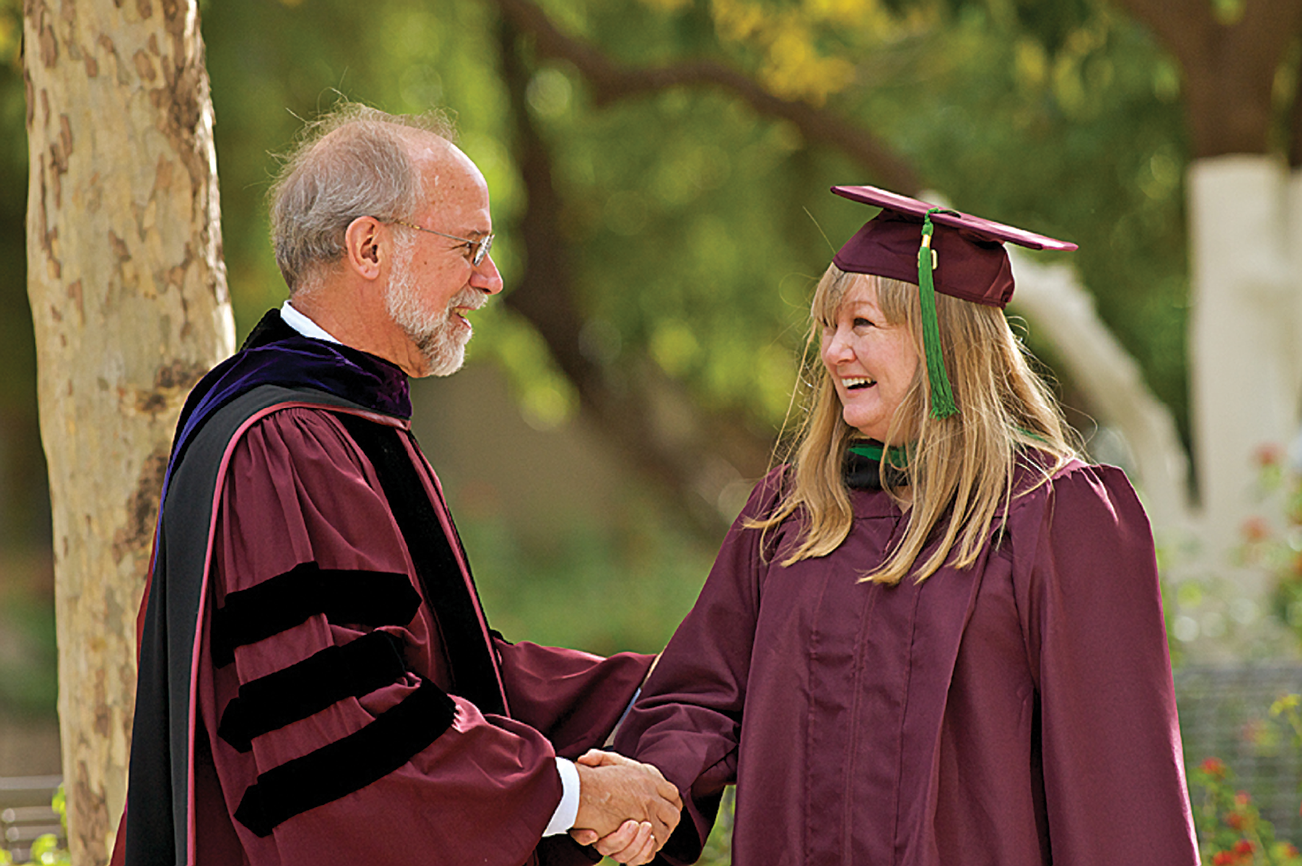15 years later, ASU’s sustainability efforts continue to look forward

When the idea of “sustainability” as a practice was established and defined in 1987 by the World Commission on Environment and Development in what is now widely known as the Brundtland Report, the roots of sustainability research and education at Arizona State University were just beginning to grow.
“We did not have degree programs in environmental science, let alone sustainability," said Charles Redman, founding director and professor at the School of Sustainability and Virginia M. Ullman Professor for Natural History and the Environment. "We had some pieces of programs that were related to the environment, but none of those programs used or even focused on sustainability.
“The reality is when Michael Crow came here (in 2002), he was intent upon building sustainability.”
ASU President Crow identified the beginnings of a larger sustainability-oriented program with the Center for Environmental Studies, a research center then run by Redman.
“A lot of his interest did focus on the center, and a big step for us had been in 1997 when we were awarded the National Science Foundation’s Long-Term Ecological Research project to focus on Phoenix and the region. It was a real recognition of the intertwined and interdependent nature of society and ecology,” Redman said.
Having a center in place with a significant grant behind it that integrated an interdisciplinary approach by bringing in architects, engineers, economists, social scientists and others provided ASU with a forward-looking foundation. What was still needed was a consensus on how to proceed.
Charles Redman, a longtime leader of urban sustainability and anthropology research and studies, is the founding director of the School of Sustainability and one of the two charged with establishing the Global Institute of Sustainability.
“With that backdrop and those programs underway, President Crow really went the last mile on trying to put sustainability on the map at ASU, and the platform for that was the landmark meeting at Temozón,” Redman said.
Temozón, a municipality in the state of Yucatán in Mexico, was the site of a landmark convening of 14 of the world’s leading ecological, environmental and climate scientists and stakeholders in May 2004. By the invitation from Crow, German atmospheric physicist Hans Joachim Schellnhuber and Harvard sustainability science Professor William Clark, this group convened for a two-day workshop to explore issues faced by leaders of institutions dedicated to sustainability research and education, and ways institutions can best collaborate to meet the challenges of bringing science and technology to bear on sustainability issues.
Also present at the Temozón meeting as an observer, quietly yet diligently watching the formation of a program dedicated to sustainability? Julie Ann Wrigley.
“People discussed how important it was that sustainability was a key issue — and perhaps an issue that was more important to promote than the environment alone, because the environment seemed to be caught in a trap of being characterized as people versus the environment,” Redman said. “Sustainability, still in a less developed stage, was not seen that way as it viewed human well-being alongside protecting the environment and dealing with climate change.”
Redman recalls going into the Temozón meetings thinking the outcome would lead to an international consortium of sorts for a global movement toward sustainability. What developed was a consensus that ASU should lead this charge because of the commitment of the university’s president. What also came to pass was a directive from Crow for Redman and then-ASU Vice President of Research Jonathan Fink to establish this sustainability institute.
“President Crow said to us, ‘You will do this. We will rename your center for something to do with sustainability, it will be more interdisciplinary than it already is, it will be more applied than it’s ever been, it will be more global and we will create a degree-granting program at all degree levels in sustainability,’” Redman said.
Redman congratulates the first graduate of the School of Sustainability, Brigitte Bavousett.
It took more than a year from that point to develop and establish what would become the Julie Ann Wrigley Global Institute of Sustainability, with a first class of students enrolling shortly after that in the newly established School of Sustainability. What was consistent throughout the process was the need for this program and all of its components to be outside the normal structures of a traditional academic program.
“President Crow didn’t say how to do it,” Redman said. “It wasn’t a micromanaged situation. He wanted to see the outcomes and to understand the big goals, but it wasn’t how it should look or what it should be called or any of those things, and this led to an active and interesting debate.
“There was pushback in the deliberation on the definition of ‘sustainability science’ because ‘science’ sort of implies some things that maybe exclude social science, literature, humanities and arts — things that we don’t know are important yet. What tipped the balance was that the engineers were uncomfortable with ‘sustainability science’ because they thought it was an affront on the engineering-versus-science dichotomy, so we went simply with ‘sustainability.’
“We also agreed not to define ‘sustainability’ at that time because we wanted to be inclusive and not exclusive. By defining it, we could be sending people away from the table and at the moment we wanted to avoid that. Then and today, ASU offers the most eclectic and inclusive sustainability program that exists.”
From that moment on, the Julie Ann Wrigley Global Institute of Sustainability thrived on developing strong partnerships and focusing on key initiatives around cities, water, arid landscapes and energy. Each of these initiatives, along with many others that have evolved since the institute’s formation in 2005, are not simply looking to sustain the world we live in, but also to develop applied solutions that support all of Earth’s inhabitants for generations to come.
As for Redman, he remains committed and involved with the institute through his various research programs.
“I’m really supportive and positive about the direction of sustainability education and research here at ASU,” he said. “I think the hardest thing to preserve and to nurture is this sense of radical change and excitement that what’s being done has to be done, because the world needs it to be done and it’s not being done anywhere else. I don’t feel in any way that we have been left behind, but like anything else I think we can continue to improve to be the best place dedicated to doing what we do.”
Redman also recognizes the importance of external support from philanthropic friends in positioning ASU as a global leader in the discipline of sustainability — which ASU, in essence, founded.
“I think this string of gifts from Julie, the gifts from the Waltons and the Swettes, those are significant milestones because they lead people to believe that something special is going on — something they want to be a part of,” Redman said. “I think one shouldn’t underestimate the impact of private investment because of the attention beyond resources that it provides. It gives the sense that it is special.”
Celebrate 15 years of GIOS
What: A free, public celebration to honor the institute's achievements and envision our collective future. Remarks by Michael Crow and Peter Schlosser, followed by a conversation with Kristin Mayes and Bryan Brayboy. Special message by Johan Rockström, co-chair of the Earth League.
When: Monday, Feb. 17. Reception is at 4 p.m.; remarks and panel discussion from 5-6 p.m.
Where: Marston Exploration Theater in ISTB IV, Tempe campus.
Details: RSVP on the event page.
Learn more about the GIOS journey
More Environment and sustainability

ASU Farm connects students to sustainable food systems
When Brennan Campbell took a Sustainability Virtues class in the 2025 spring semester, he never imagined it would lead him to a goat pen on a beautiful December morning, raking droppings into a pile.…

Arizona Water Innovation exhibit highlights 1,000 years of ingenuity, connection
In Arizona, water and innovation are inseparable. From the ancestral O’odham canal systems that carried water from the Salt and Gila rivers to today’s cutting-edge community projects that help…

How integrating nature can make cities more equitable
More than 80% of people on Earth now live in cities and towns, which means that urban areas have a huge role to play in solving the planet’s climate and biodiversity crisis. A new report from…

